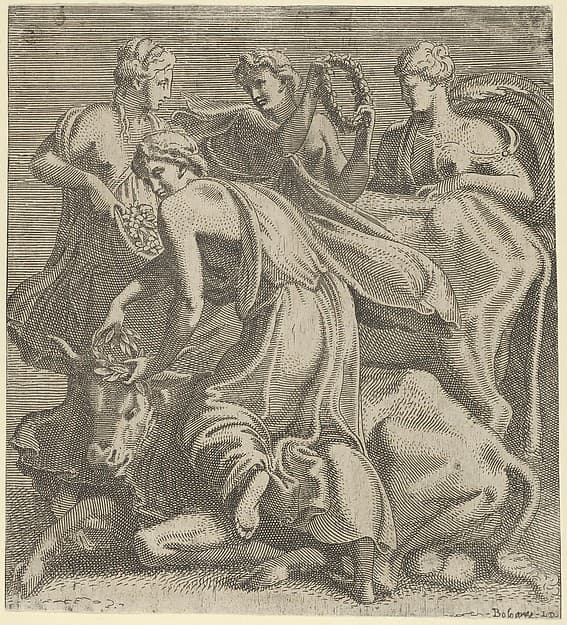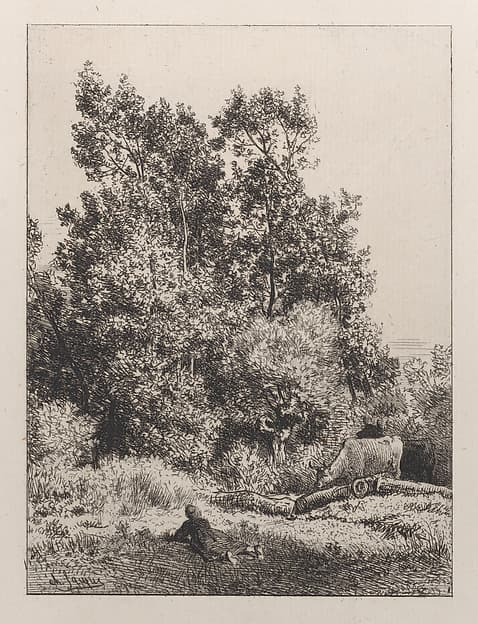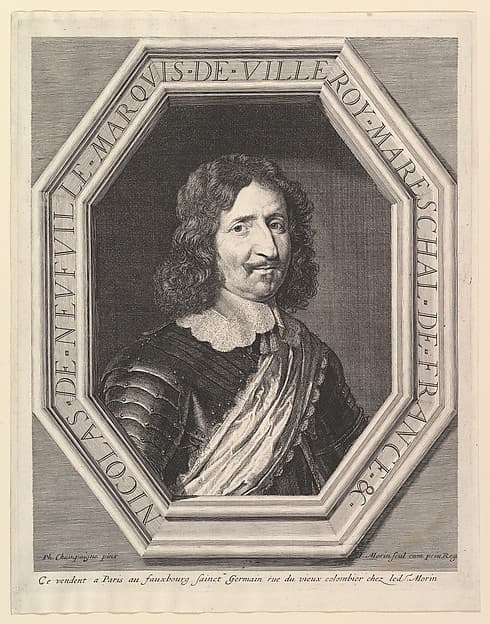
Related Artworks
Discover similar artworks
The Revenge of Nauplios, after Rosso Fiorentino
ca. 1625–46

The School Master
ca. 1638

Small male figure in three-quarter view with outstreched left hand and right hand grasping sword at hip, from the series 'Varie figure gobbi'
ca. 1621–25

Composition of figures arranged in a landscape foreground before a statue of a female goddess, at left two nude figures support a nude woman riding a goat led by a putto, at center a draped woman holds one finger to her eye behind a satyr holding a bow, at right Mercury twists away from the satyr, from a series of twelve frieze-like designs showing bacchanals, sacrifices, and dances
ca. 1617–25

The Rape of Europa
ca. 1542–45

Landscape
1864

Along the Stream
1866

Nicolas de Neuville, marquis de Villeroy

Civil Garb of the French Citizen
1794

Sheet of Sketches
1735

Head of a Cherub, after Guercino

Breakfast, from "Gazette des Beaux-Arts"
1897
More by Claude Gillot
Explore other works by this artist

Four Actors in Heroic Costume, with a Study of a Helmeted Head
ca. 1711–22

Design of a Flintlock, Side Plate, Butt Plate, and Trigger Guard, unnumbered plate from Nouveaux Desseins d'Arquebuserie Inventez et Gravez par Le Sr. Gillot
ca. 1715

Plate for The Fish and the Fireworks, Fable Sixteen, in Fables Nouvelles, Dediées au Roy
1719

The Education (L'Education): in a forest, to right an old satyr instructor holding a wand, teaching a group of children, to the left a merchant of orvietan trying to attract spectators with his act, from 'The lives of satyrs' (La vie des satyres)
ca. 1700–1720

Habit de Faune: a faun wearing a tonnelet with a flute attached, a cane in his right hand and vines around his horns, from 'New designs for costumes' (Nouveaux desseins d'habillements à l'usage des balets operas et comedies)
ca. 1721

Habit d'Ixion: a man wearing a tonnelet with a sword in the belt, a turban with one large feather on his head, from 'New designs for costumes' (Nouveaux desseins d'habillements à l'usage des balets operas et comedies)
ca. 1721

Habit de Roy: a man wearing a tonnelet decorated with rosettes, a crown and a turban with feathers on his head, from 'New designs for costumes' (Nouveaux desseins d'habillements à l'usage des balets operas et comedies)
ca. 1721

Plate 46: Habit de Folie: a woman in a ballet pose, wearing a bonnet and holding a marotte in her right hand, from 'New designs for costumes' (Nouveaux desseins d'habillements à l'usage des balets operas et comedies)
ca. 1721

The festival of Diana, interrupted by satyrs (Feste de Diane, troublée par des Satyres): nymphs gathered around the bust of Diana in a stone niche at center, surprised by the arrival of satyrs from either side, from 'Les Bacchanales; Quatres Festes'
ca. 1786

Witches' Sabbath, within a nocturnal landscape, a necromancer seated at top center wearing a robe and cap inscribed with Kabbalist symbols, below him to left a horse with the head of a beast, a ring of nude dancers to right, a robed with the head of a pig to left, various witches, sorcerers, strange animals, and monsters on the ground to left in the foreground, from 'The Sabbaths' (Les Sabbats)
ca. 1700–1720

The Marriage (Le Mariage): in a forest, an old satyr marries the betrothed in center, musicians to right, old satyrs with canes to the left, a couple consulting an old philosopher to left in the foreground, from 'The lives of satyrs' (La vie des satyres)
ca. 1700–1720

The Funeral (Les Obseques): various satyrs gathered in a clearing, funeral pyre to left, a freshly dug grave and a tomb decorated with satyr heads and antlers in center, upon which musicians are seated, from 'The lives of satyrs' (La vie des satyres)
ca. 1700–1720